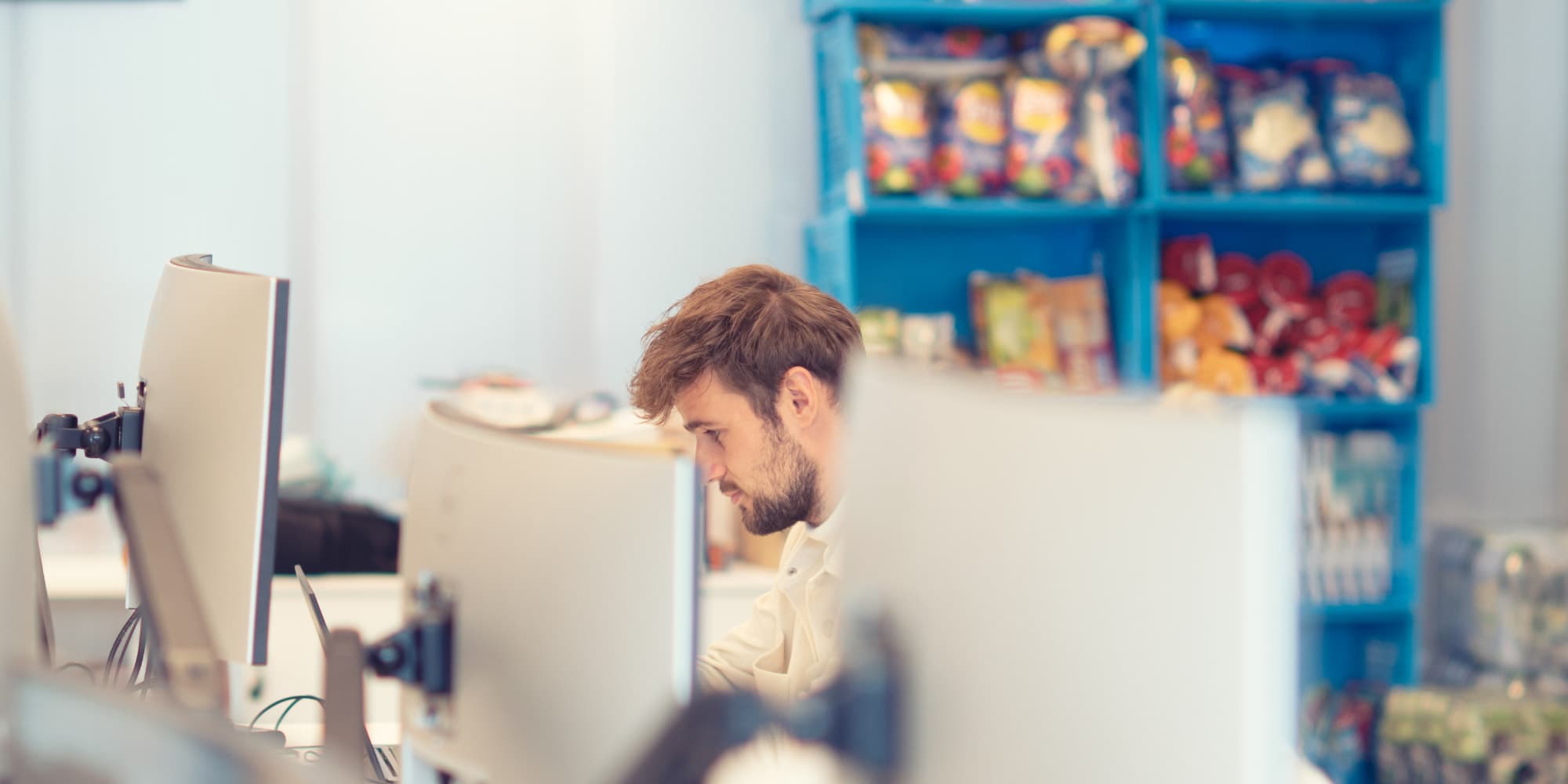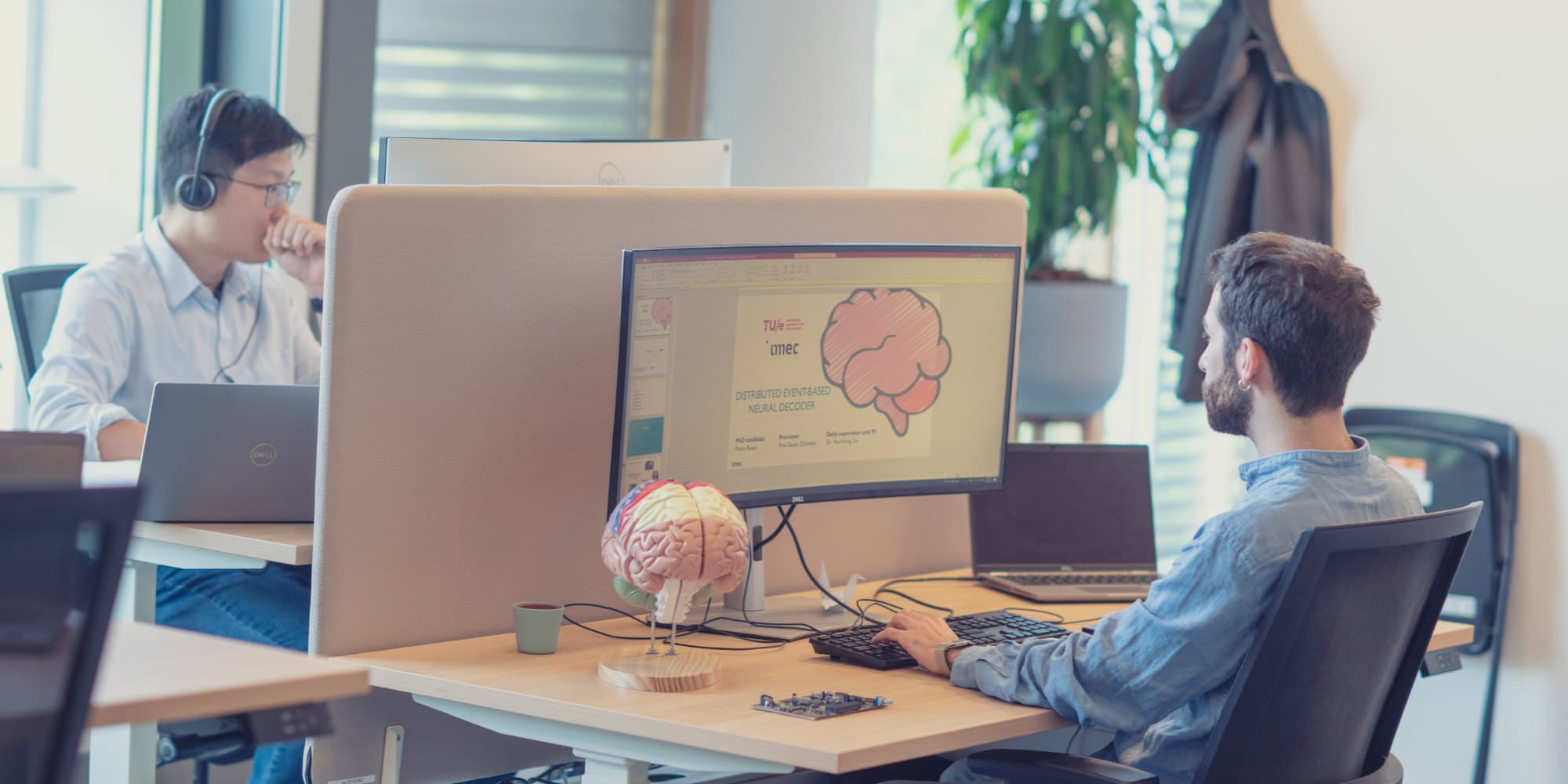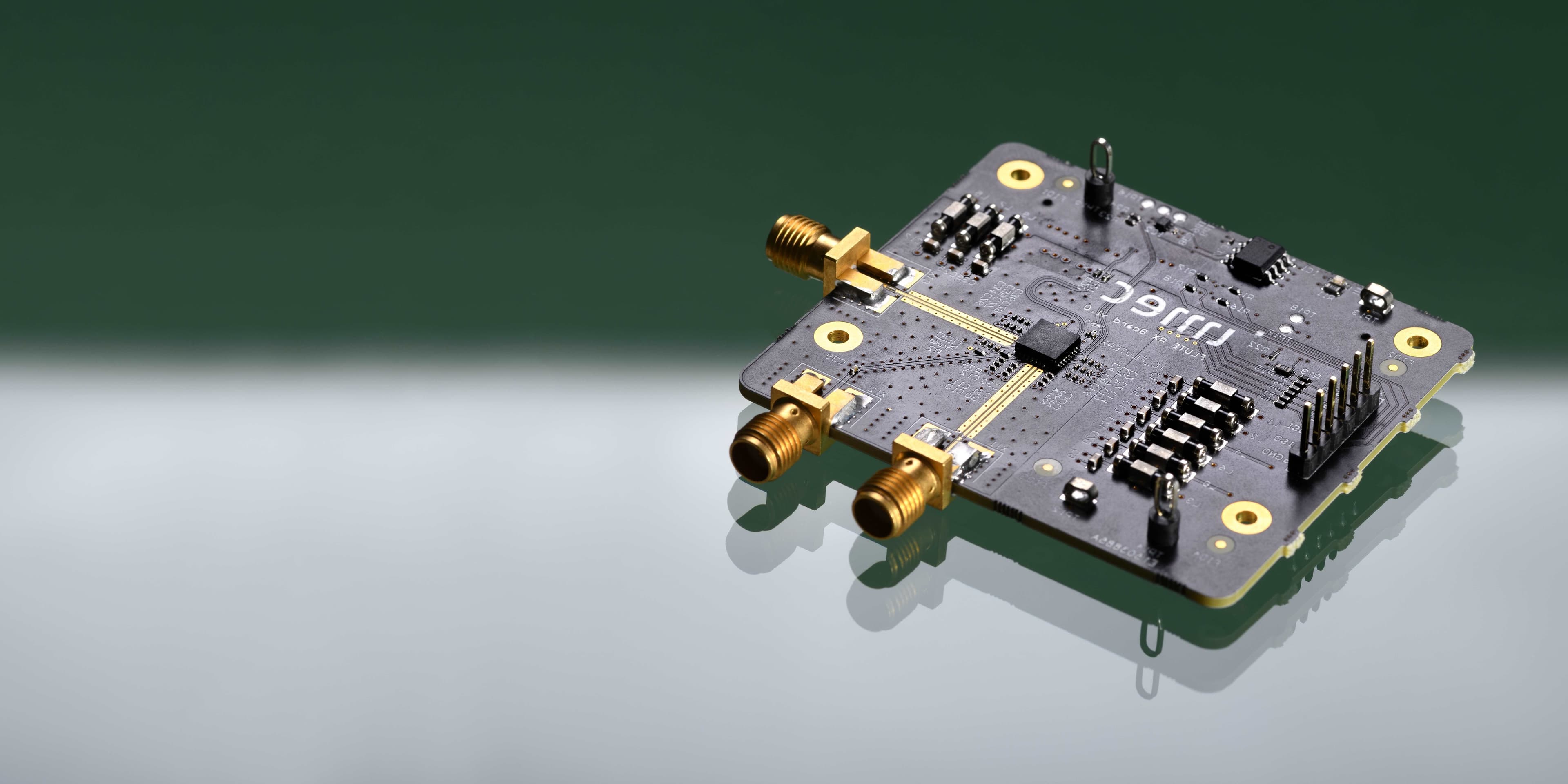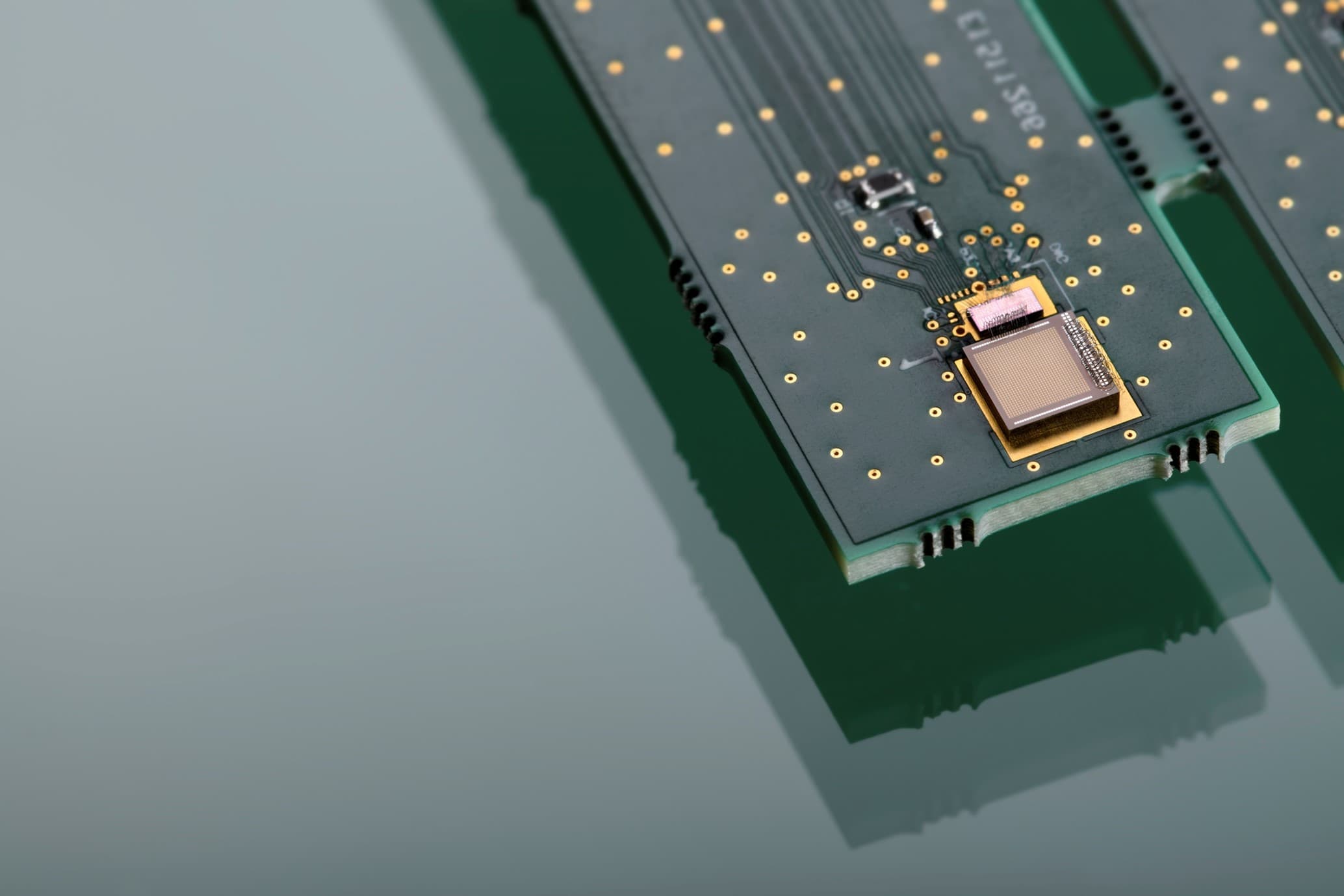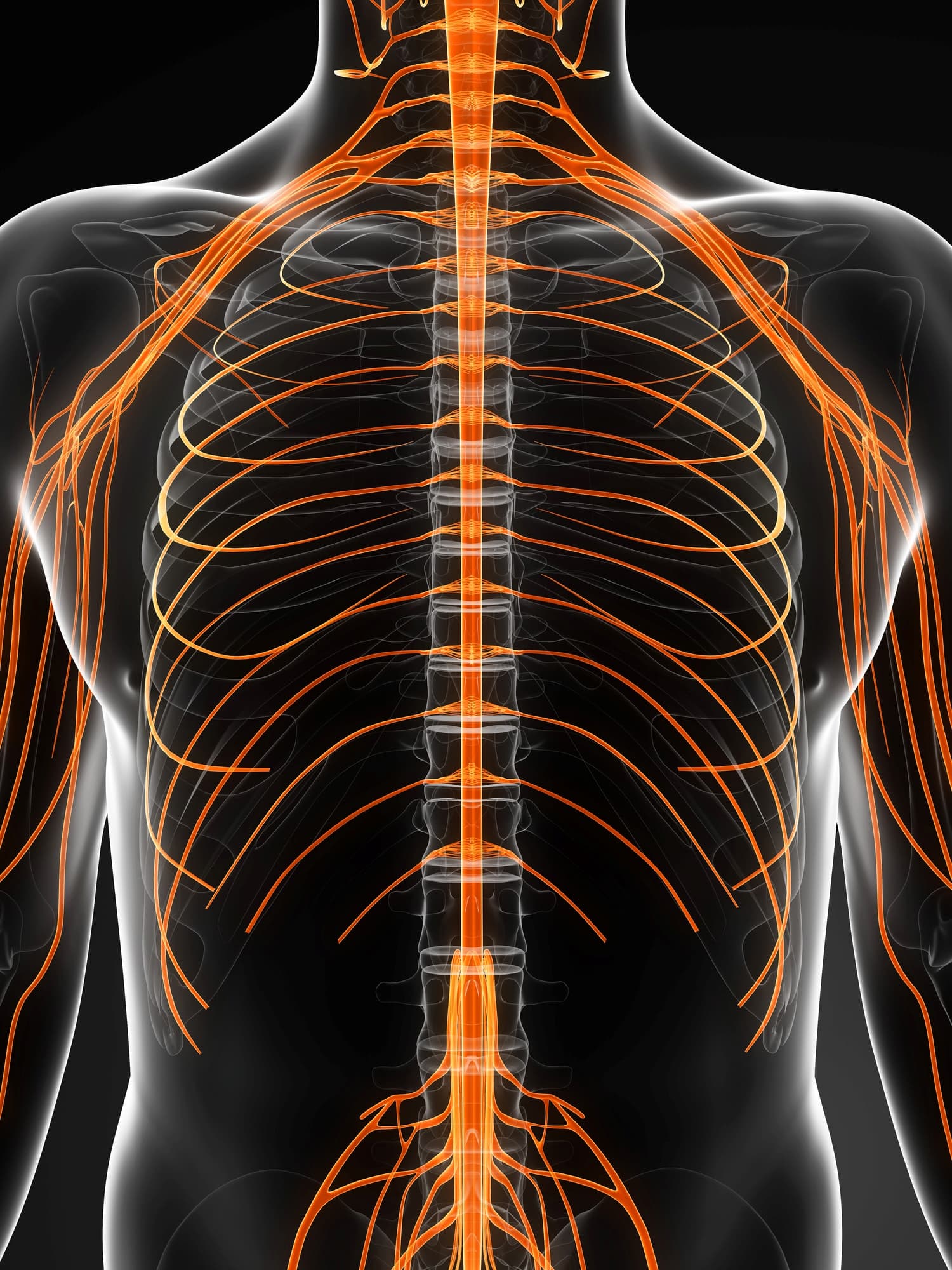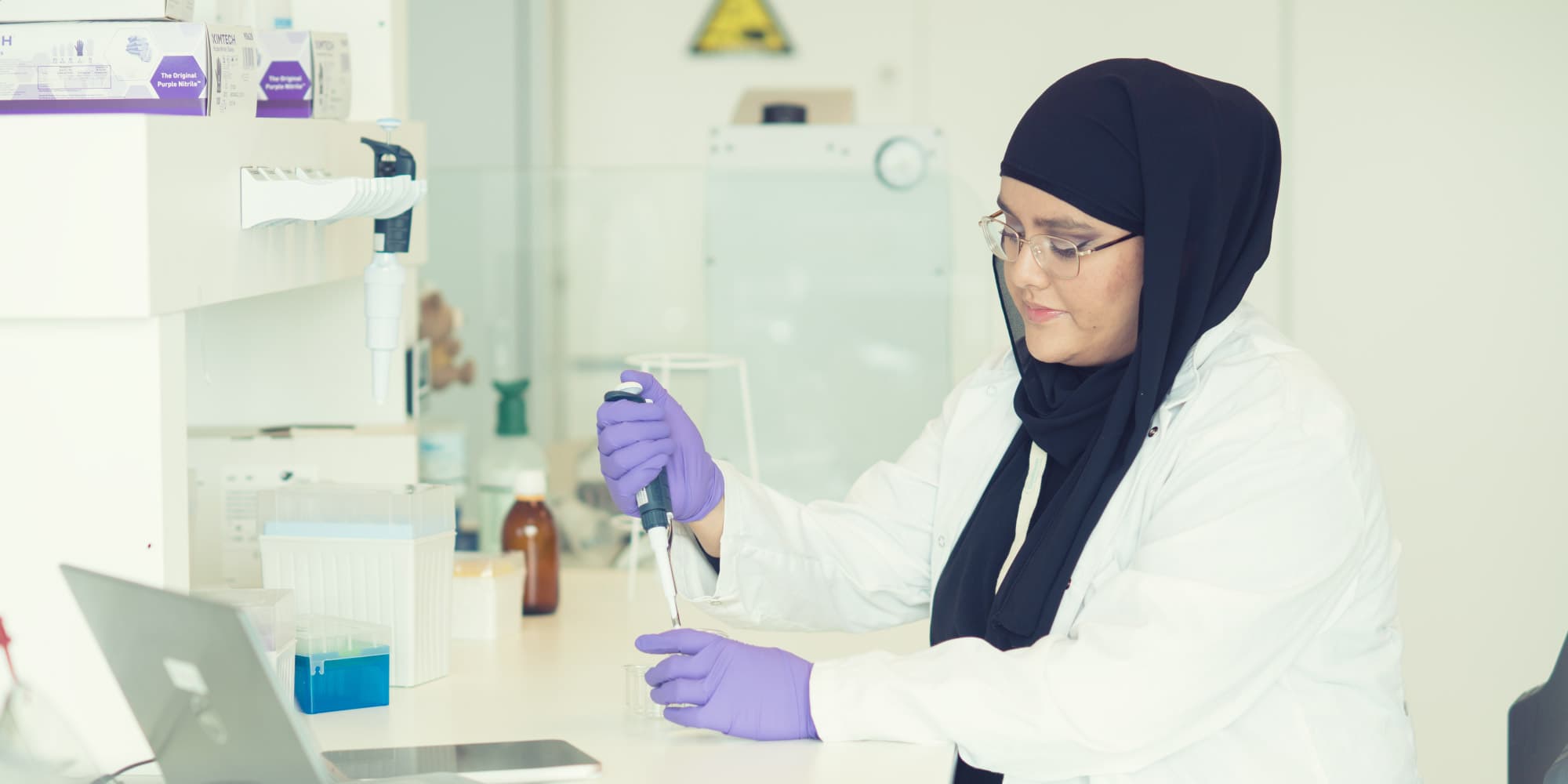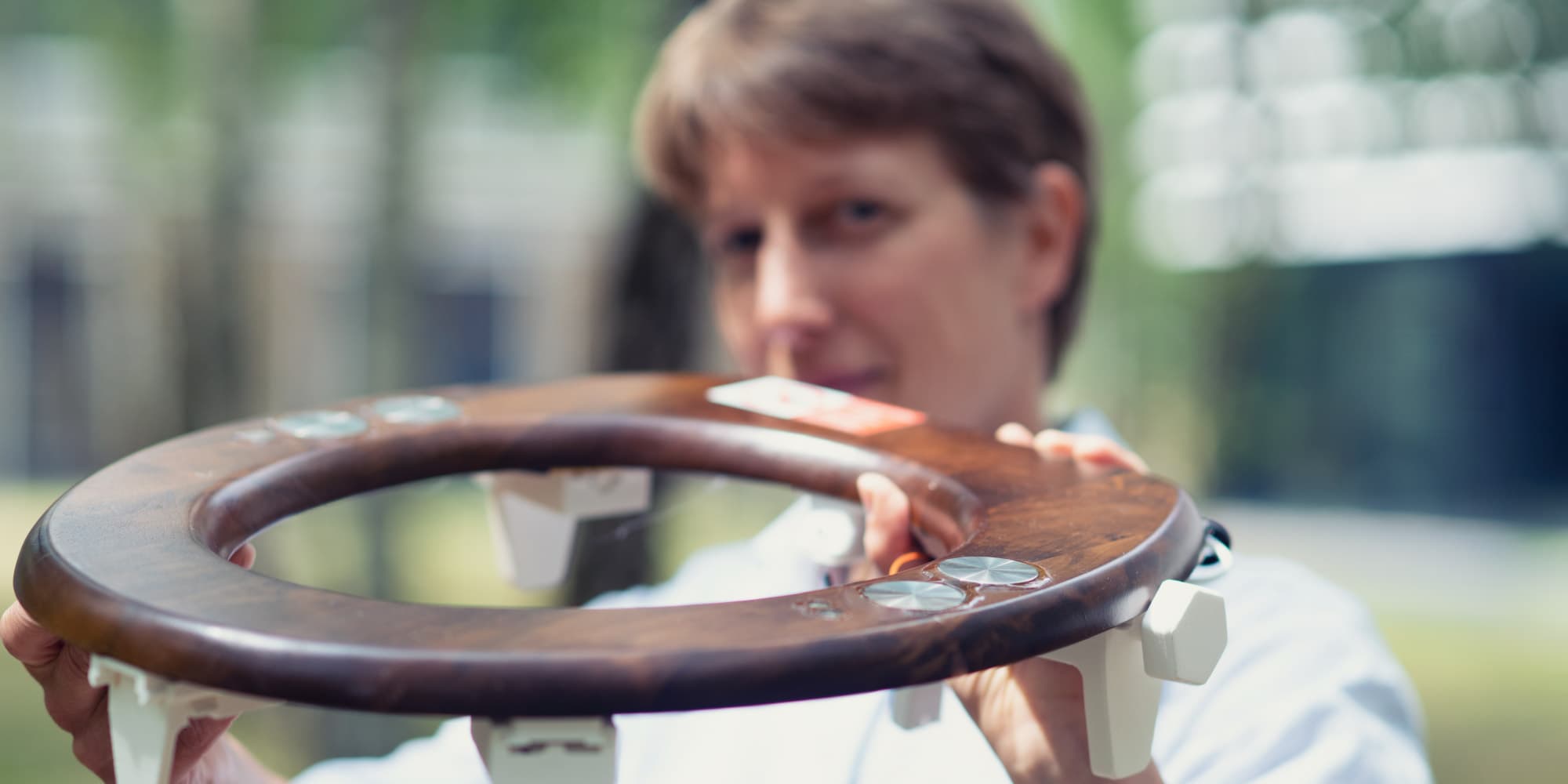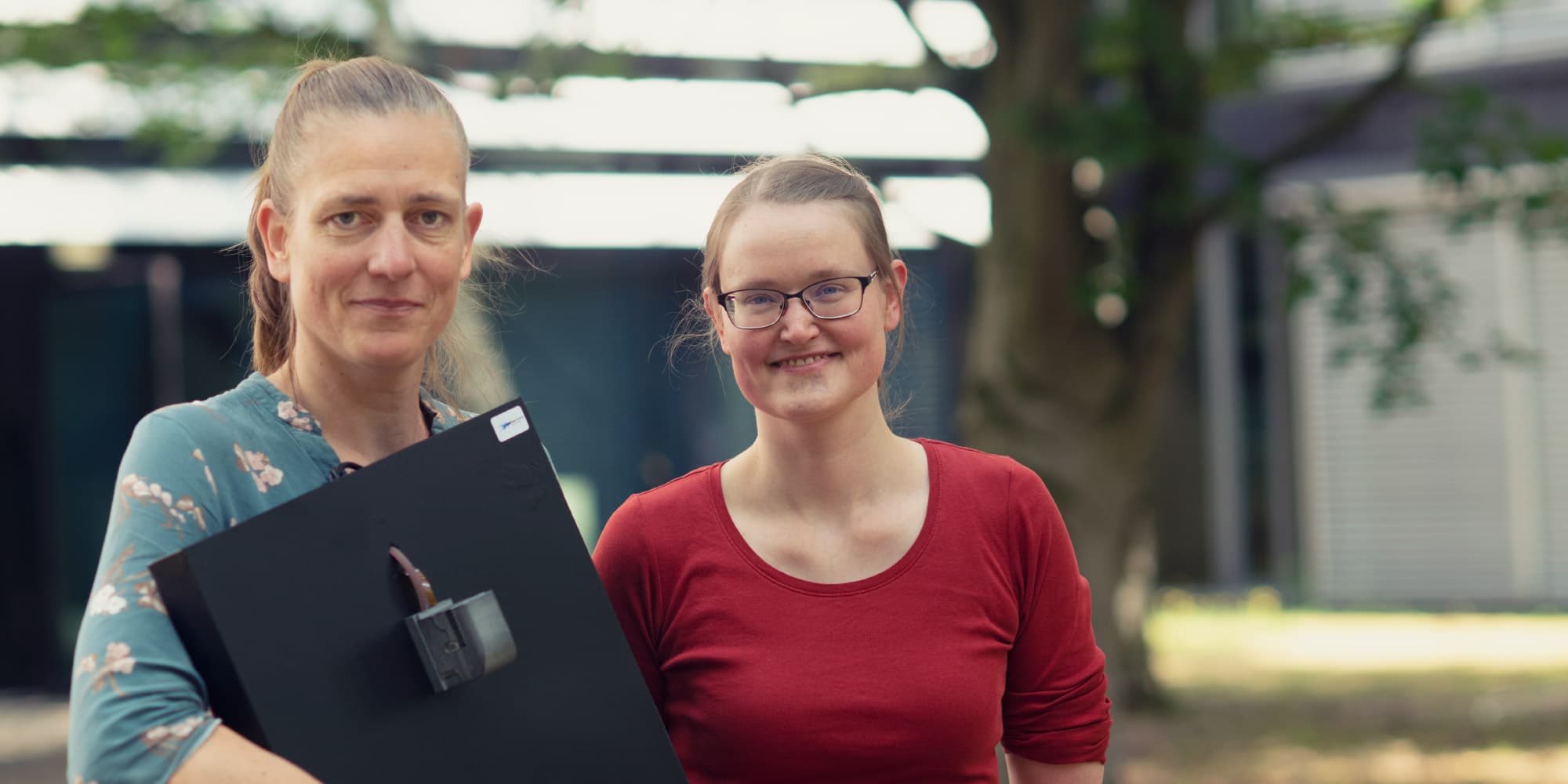Founded in 2006 as open innovation research institute by imec and TNO, Holst Centre continues to build on its successes in developing technologies in answer to today’s and tomorrow’s societal challenges. Kathleen Philips and Ton van Mol (from imec and TNO respectively) reflect on how this leading institute accelerates innovation for building a resilient society.
Top notch research with impact
Kathleen: ‘The current Covid-19 pandemic shows how vulnerable we are as a society. At the same time, this crisis has catapulted us into adopting technologies that enable us to collaborate in new online settings or even to develop vaccines ten-times faster than ever before. Importantly, in the long run also, such technologies will help us in finding fitting solutions to such pressing issues as affordable and accessible healthcare and a zero-emission energy system.’
Ton: 'It’s safe to say that innovation is more important than ever before. It was with a visionary foresight that Holst Centre was established 15 years ago: to accelerate innovations by way of collaborative research programs with industry that meet the needs of the future. Since then, the disruptive technologies that we developed have been enormously impacting.’
‘Take our research on OLED and flexible display technology. These were ongoing focus points of our research efforts during the first ten years of Holst Centre. Now these technologies are pointing the way in the smartphones of the future. Our research and innovations are also the basis for spin-offs and start-ups. A proud and recent example is LionVolt, which is now producing our revolutionary solid-state battery. It has a high capacity and fast charging speed, based on disruptive 3D architecture.’
Kathleen: ‘Another good example of our impacting technologies are wearables with health trackers. New product introductions like Onera's sleep monitor are becoming part of our everyday lives within no time. Yet, such products has been built on top-notch research and chip technology. It’s technology that we as user take for granted, but that has transformed the way we act in everyday life.’
Long-term vision
Kathleen: ‘Our vision is a long -term one. But to be successful and drive innovation requires persistence and focus. You need the freedom to explore and potentially fail in order to learn, and finally develop the right technology for future needs.’
‘And that is precisely what we are good at doing: we have a long-term vision and foster our research, our bright minds, our IP and our partnerships with industry. Key has been our approach to R&D: we believe in the power of having the freedom to explore, while working closely with our industrial partners. At the same time ensuring we learn fast and continuously move forward. In this way, we have become an innovation leader. Our partnerships enable industry to apply our disruptive technologies in successful, market-ready products in areas like wearable health tech, ultra-low power design and flexible electronics.’
Key technologies
Ton: ‘Holst Centre is focused on key enabling technologies that help us solve societal challenges. Take our ongoing research in the field of hybrid printed electronics. Over the past 10 years, we developed this technology in close collaboration with industry. It is now being applied in such products as IoT sensors, medical wearables and flexible LED foils.’
Kathleen: ‘Another example of such key technology is our work on ultra-wideband, also known as UWB. This high-precision and low-power positioning and tracking technology has recently been ‘re-discovered’ by industry to bring location awareness to IoT products. In fact, since Apple introduced UWB on their iPhone some two years ago UWB is hot! It became a ‘must have’ overnight for many companies. However the use of UWB on all flagship smartphones needs to become more accurate and at a much lower power mode. At Holst Centre, we are designing next-gen UWB that has 5-10 times lower power and higher accuracy, and as such will open up way more IoT applications.’’
Ton: ‘What this teaches us is, that as long as our research roadmaps are well defined and have relevant themes, sooner or later there will be a demand for our breakthrough innovations and enabling technologies.’
Enabling technologies – Carrying the risk for industry
Ton: ‘Our strength lies in innovation with a disruptive character. Many of the elements of such technologies – including the materials used, production technologies and design – are completely new as well. Such complexity means that it can be difficult to develop technology on one’s own. Know-how derived from different disciplines and companies is what is needed throughout the value chain. Also, sometimes working with long-term roadmaps is simply too big a risk for industry to take. That’s why we have in place a shared innovation research program, where we work with multiple companies on a joint roadmap.’
‘By jointly carrying the risk for and with industry, we are enabling future value-adding technologies. We iron out the technical bottlenecks. Our challenge – and it’s something we are successful in doing – is to continually check if our vision still fits with societal needs and industry priority.’
Helping make healthcare scalable
Ton: ‘Our vision is to use technology to excel in the domain of medical devices and enable solutions that move patients out of the hospital. In doing so, health management will become a natural and unobtrusive part of life. Importantly, such innovations will help make healthcare scalable.’
‘Wireless communication has always been key in whatever we’ve undertaken here at Holst Centre. At the same time, we’ve achieved much in the development of flexible electronics. Combining wireless communication with flexible electronics has already given us our health patches.'
‘Now that such advanced wearables measure health parameters from outside the body, the next step will be the ability to monitor parameters from inside the body using implantable devices or via one’s physical surroundings. To this end, our ‘old’ roadmaps towards miniaturization and low energy use, remain relevant to this day and beyond.’
Kathleen: ‘Building on our strengths, we are moving towards more demanding health applications and technologies, including: artificial organs, implants, closed-loop therapeutics and stimulation. The same holds true for our enabling technology efforts, where integrated photonics is a new kid on the block. This technology has great potential for new health diagnostics, as well as for better accuracy sensing, and integrated Light Detection and Ranging remote sensing.’
Ton: ‘And, moving forward, as Kathleen mentioned, we believe in the power of photonics for measuring a person’s health more accurately. This technology allows us to not only measure the various vital signs, but also measure biochemical parameters, determine blood sugar levels, and detect stress and – potentially even – inflammation.’
‘This means that, for instance, for people suffering from a chronic disease, such as COPD (Chronic Obstructive Pulmonary Disease) or heart failure, we will be able to measure the effects of certain therapies over time in a home situation. It opens up new possibilities for personalized and value-based healthcare.’
Vibrant eco-system
Kathleen: ‘Key to our success is the vibrant eco-system in which Holst Centre operates. After all, true innovations require innovative materials, production processes and more. So, in fact, you need a whole value chain in place to enable a new technology. Our close ties with industry make us stand out from other research institutes.’
Ton: ‘And it’s here that we also add value for our partners. For instance, we do pre-competitive checks to find out if there is a market demand, or expected to be one, for a certain technology. We also help to turn technology into a market-ready product.’
‘Taking the Philips Healthdot: for this company to have a viable, marketable product, new chip technology was required. So, we partnered with chip manufacturers to make a uniquely complex chip for Philips. Similarly, a new production process was required to produce the dot. We found the right producer.’
‘We don’t only do this for large companies such as Philips, but also for smaller ones with niche solutions. And, nowadays, if we can’t find a company that can develop the things we need, we establish spin-offs or start-ups.’
Societal impact
Kathleen: ‘At the end of the day, what remains paramount to us, is the question how we can accelerate innovations into value-adding solutions for society. Recently, we’ve been helping local authorities tackle one of the biggest problems and long-term causes of death in our urbanized society: air quality. Based on our cloud-based sensor technologies, fine-grained, real-time air quality maps provide the tools required to closely monitor air quality and help facilitate smarter and healthier cities.’
‘Innovations that can cut healthcare costs – while improving patient wellbeing – similarly have a huge potential. For instance, our researchers have collaborated with the Dutch Kidney Foundation in developing a portable artificial kidney for dialysis patients, that fits into a cabin suitcase. This could make the current invasive treatment become completely redundant. But it doesn’t end there: as nanotechnology continues to make electronics devices ever smaller, we can push forward even further. An implantable, artificial kidney will make an even greater impact.’
Measuring success
Kathleen: ‘What we have learned at Holst Centre over the past 15 years, is that success is something that cannot be predicted. At least, it’s hard to predict when the market will be ready to embrace a new technology. Nevertheless, we have a proud and proven track record in designing many ground-breaking innovations, enabling business success for our industrial partners, our start-ups and society.’

Ton & Kathleen
Innovatie versnellen voor een veerkrachtige samenleving - 15 jaar Holst Centre
Holst Centre, opgericht in 2006 door imec en TNO als onderzoeksinstituut voor open innovatie, bouwt voort op zijn successen in het ontwikkelen van technologieën die een oplossing bieden voor de maatschappelijke uitda-gingen van vandaag en morgen. Kathleen Philips (imec) en Ton van Mol (TNO ) vertellen hoe dit toonaange-vende instituut innovatie versnelt om een veerkrachtige samenleving op te bouwen.
Eersteklasonderzoek met impact
Kathleen: ‘De huidige Covid-pandemie laat zien hoe kwetsbaar we als samenleving zijn. Tegelijkertijd heeft deze crisis ervoor gezorgd dat we razendsnel technologieën hebben geadopteerd om te kunnen samenwer-ken in nieuwe online-omgevingen en dat vaccins zelfs tien keer sneller dan ooit zijn ontwikkeld. Van belang is, ook op de lange termijn, dat dergelijke technologieën ons zullen helpen om passende oplossingen te vinden voor prangende vraagstukken, zoals betaalbare en toegankelijke gezondheidszorg en een emissievrij energiesysteem.’
Ton: 'Je kunt rustig stellen dat innovatie belangrijker is dan ooit. Het was met visionaire, vooruitziende blik dat Holst Centre 15 jaar geleden werd opgericht: om innovaties te versnellen met behulp van gezamenlijke onderzoeksprogramma’s met de industrie die voorzien in toekomstige behoeften. De disruptieve technolo-gieën die we sindsdien hebben ontwikkeld, hebben een enorme impact gehad.’
‘Neem ons onderzoek naar OLED en flexibele beeldschermtechnologie. In de eerste tien jaar van Holst Cen-tre zijn onze onderzoeksinspanningen continu op deze gebieden gefocust geweest. Nu wijzen deze techno-logieën de weg in de smartphones van de toekomst. Ons onderzoek en onze innovaties vormen ook de ba-sis voor spin-offs en start-ups. Een prachtig recent voorbeeld is LionVolt, dat nu onze revolutionaire solid-state batterij produceert. Die heeft een hoge capaciteit en hoge oplaadsnelheid, gebaseerd op disruptieve 3D-architectuur.’
Kathleen: ‘Een ander uitstekend voorbeeld van onze impactvolle technologieën zijn wearables met gezond-heidstrackers. Nieuwe producten, zoals de slaapmonitor van Onera, zijn in no time deel uit van ons dage-lijks leven geworden. En toch zijn dergelijke producten gebaseerd op toponderzoek en chiptechnologie. Het is technologie die wij als gebruiker gewoon voor lief nemen, maar die onze manier van handelen in het dagelijks leven heeft veranderd.’
Lange-termijn visie
Kathleen: ‘Onze visie is een lange-termijn visie. Maar om succesvol te zijn en innovatie te stimuleren moet je vasthoudend en gefocust zijn. Om te leren en uiteindelijk de juiste technologie voor toekomstige behoef-ten te ontwikkelen, heb je de vrijheid nodig om te onderzoeken en misschien te falen.’
‘En dat is precies waar we goed in zijn: we hebben een lange-termijn visie en koesteren ons onderzoek, onze knappe koppen, onze IP en onze partnerschappen met de industrie. Cruciaal daarbij is onze benade-ring van R&D: we geloven in de kracht van de vrijheid om te verkennen en te onderzoeken, terwijl we nauw samenwerken met onze industriële partners. Tegelijkertijd zorgen we dat we snel leren en steeds vooruit-gaan. Op deze manier zijn we een leider in innovaties geworden. Onze partnerschappen maken het voor de industrie mogelijk om onze disruptieve technologieën toe te passen in succesvolle, marktklare producten. Met name in gebieden als wearable health tech, ultra-low power design en flexibele elektronica.’
Cruciale technologieën
Ton: ‘Holst Centre is gefocust op key enabling technologies: de cruciale, onderliggende technologieën die het mogelijk maken maatschappelijke problemen op te lossen. Neem ons lopende onderzoek op het gebied van hybride geprinte elektronica. In de afgelopen 10 jaar hebben we deze technologie in nauwe samenwer-king met de industrie ontwikkeld. Nu wordt het toegepast in producten als IoT-sensorsen, medische wearables en flexibele LED-folies.’
Kathleen: ‘Een ander voorbeeld van zo’n cruciale technologie is ons werk aan ultra-breedband, ook wel bekend als UWB (ultra-wideband). Deze uiterst nauwkeurige en energiezuinige positioning & tracking tech-nologie is onlangs ‘herontdekt’ door de industrie, voor het locatiebewust maken van IoT producten. Sterker nog, sinds Apple het zo’n twee jaar geleden op hun iPhone introduceerde is UWB helemaal hot! Het werd ineens een ‘must have’ voor veel bedrijven. Het gebruik van UWB op alle boegbeeld smartphones moet echter nauwkeuriger worden en met een veel lager vermogen. Bij Holst Centre ontwerpen we next-gen UWB dat 5-10 keer minder stroom verbruikt en nauwkeuriger is, en zo veel meer IoT-toepassingen mogelijk maakt. ’
Ton: ‘Wat dit ons leert is dat, zolang onze onderzoeksroutekaarten goed gedefinieerd zijn en relevante thema’s hebben, er vroeg of laat wel vraag is naar onze baanbrekende innovaties en enabling technologie-en.’
Enabling technologieën – Risico dragen voor de industrie
Ton: ‘Onze kracht zit in innovatie met een disruptief karakter. Veel van de elementen van dat soort techno-logieën – inclusief de gebruikte materialen, productietechnologieën en design – zijn eveneens totaal nieuw. Een dergelijke complexiteit betekent dat het lastig kan zijn om de technologie in je eentje te ontwikkelen. Je hebt knowhow nodig die afkomstig is van verschillende disciplines en bedrijven door de hele waardeke-ten heen. Ook is het werken met lange-termijn routekaarten voor de industrie soms eenvoudigweg een te groot risico om te nemen. Om die reden hebben wij een gezamenlijk innovatieonderzoeksprogramma, waarin we met meerdere bedrijven werken aan een gedeelde routekaart.’
‘Door gezamenlijk het risico voor en met de industrie te dragen, maken we toekomstige waarde-toevoegende technologieën mogelijk. We strijken de technische bottlenecks glad. Onze uitdaging – en dat doen we met succes – is om continu te checken of onze visie nog steeds aansluit bij maatschappelijke be-hoeften en prioriteiten van de industrie.’
Gezondheidszorg schaalbaar helpen maken
Ton: ‘Onze visie is technologie te gebruiken om te excelleren op het gebied van medische devices en oplos-singen mogelijk te maken die patiënten uit het ziekenhuis halen. Zodoende wordt het monitoren van ge-zondheid een natuurlijk en onopvallend onderdeel van het leven. Belangrijk is ook dat dergelijke innovaties helpen om de zorg schaalbaar te maken.’
‘Draadloze communicatie is altijd cruciaal geweest in alles wat we hier bij Holst Centre hebben onderno-men. Tegelijkertijd hebben we veel bereikt in de ontwikkeling van flexibele elektronica. De combinatie van draadloze communicatie met flexibele elektronica heeft ons al onze health patches (gezondheidspleisters) opgeleverd.'
‘Nu dit soort geavanceerde wearables gezondheidsparameters van buitenaf – buiten het lichaam – meten, is een volgende stap de mogelijkheid om parameters van binnen het lichaam te monitoren. Dat zou dan gaan met behulp van implanteerbare devices of via iemands fysieke omgeving. Daarom blijven onze ‘oude’ routekaarten gericht op miniaturisatie en een laag energiegebruik tot op de dag van vandaag, maar ook daarna, relevant.’
Kathleen: ‘Voortbouwend op onze sterkten gaan we richting de meer veeleisende gezondheidsapplicaties en technologieën, waaronder kunstorganen, implantaten, closed-loop therapieën en stimulatie. Hetzelfde geldt voor onze inspanningen op het gebied van enabling technologieën, waar geïntegreerde fotonica een nieuwkomer is. Deze is veelbelovend heeft voor nieuwe gezondheidsdiagnostiek, en ook voor sensormetin-gen met een hogere nauwkeurigheid en geïntegreerde Light Detection and Ranging (LIDAR-)metingen op afstand.’
Ton: ‘En, richting de toekomst, zoals Kathleen al zei, geloven we in de kracht van fotonica om iemands ge-zondheid nauwkeuriger te meten. Met deze technologie kunnen we straks niet alleen de verschillende vita-le functies meten, maar ook de biochemische parameters, de bloedsuikerspiegel bepalen en stress detecte-ren – en mogelijk zelfs ontstekingen.’
‘Dit betekent, bijvoorbeeld, dat we bij mensen met een chronische ziekte, zoals COPD of hartfalen, in een thuissituatie de effecten van bepaalde therapieën in de tijd kunnen meten. Het opent nieuwe mogelijkhe-den voor gepersonaliseerde gezondheidszorg.’
Levendig ecosysteem
Kathleen: ‘Cruciaal voor ons succes is het levendige ecosysteem waarbinnen Holst Centre opereert. Echte innovaties vereisen immers innovatieve materialen, productieprocessen en meer. Dus je hebt eigenlijk een complete waardeketen nodig om een nieuwe technologie mogelijk te maken. Door onze nauwe banden met de industrie onderscheiden we ons van andere onderzoeksinstituten.’
Ton: ‘En juist hier voegen we ook waarde toe voor onze partners. We doen, bijvoorbeeld, pre-competitieve checks om te achterhalen of er marktvraag is, of te verwachten is, voor een bepaalde technologie. We hel-pen ook om van technologie een marktklaar product te maken.’
‘Neem de Philips Healthdot: voor een levensvatbaar, verkoopklaar product had het bedrijf nieuwe chip-technologie nodig. Dus werkten we samen met chipfabrikanten om een complexe unieke chip voor Philips te maken. Ook was een nieuw productieproces nodig om de dot te produceren. We hebben de juiste pro-ducent gevonden.’
‘We doen dit niet alleen voor grote bedrijven zoals Philips, maar ook voor kleinere bedrijven met niche-oplossingen. En als we geen bedrijf kunnen vinden dat de dingen kan ontwikkelen die we nodig hebben, dan richten we tegenwoordig spin-offs of start-ups op.’
Maatschappelijke impact
Kathleen: ‘Wat uiteindelijk voor ons altijd voorop blijft staan, is de vraag hoe we innovaties kunnen ver-snellen om er waarde-toevoegende oplossingen voor de maatschappij van te maken. Onlangs hebben we lokale overheden geholpen om een van de grootste problemen en lange-termijn doodsoorzaken in onze geürbaniseerde samenleving aan te pakken: de luchtkwaliteit. Op basis van onze cloud-gebaseerde sensor-technologieën bieden fijnmazige, real-time luchtkwaliteitskaarten de tools die nodig zijn om de luchtkwali-teit nauwkeurig te monitoren en slimmere en gezondere steden te helpen faciliteren.
‘Ook innovaties die de zorgkosten kunnen terugdringen – en tegelijk het welzijn van patiënten verbeteren – hebben enorm veel potentieel. Onze onderzoekers hebben bijvoorbeeld samengewerkt met De Nederland-se Nierstichting om een draagbare kunstnier voor dialysepatiënten te ontwikkelen, die in een handbagage-koffer past. Hierdoor zou de huidige invasieve behandeling volledig overbodig kunnen worden. Maar daar stopt het niet: naarmate nanotechnologie elektrische devices steeds kleiner maakt, kunnen we nog een stap verder gaan. Een implanteerbare kunstnier zal nog veel meer impact hebben.’
Succes meten
Kathleen: ‘Wat we de afgelopen 15 jaar bij Holst Centre hebben geleerd, is dat succes niet te voorspellen valt. Althans, het is moeilijk te voorspellen wanneer de markt er klaar voor is een nieuwe technologie te omarmen. Desalniettemin hebben we een respectabele en bewezen staat van dienst in het ontwerpen van talloze baanbrekende innovaties, waarmee we zakelijk succes mogelijk maken voor onze industriële part-ners, onze start-ups en de samenleving.’
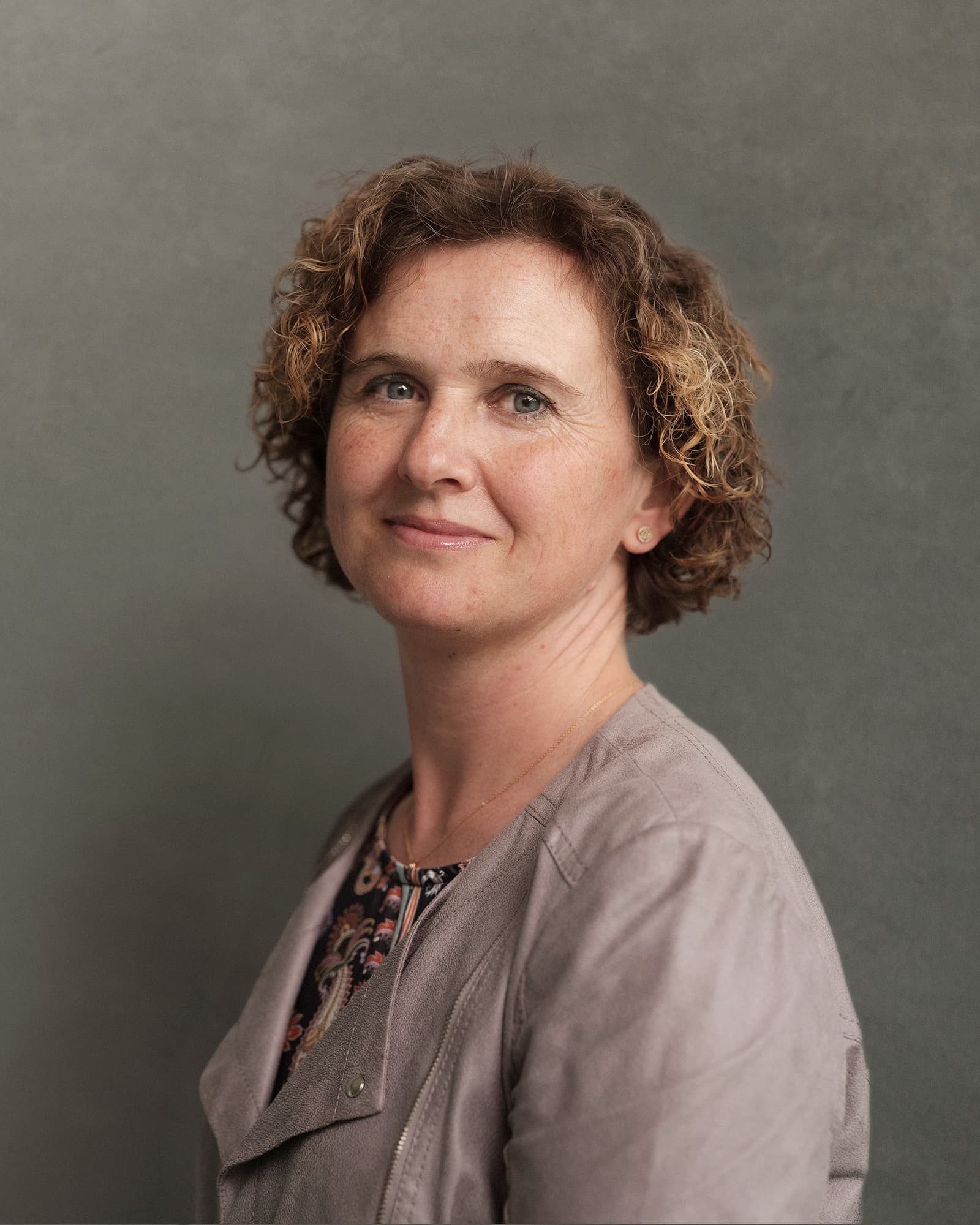
Dr. Kathleen Philips is VP R&D and General Manager of imec Netherlands within Holst Center. She has been promoted in electrical engineering, is author and co-author of more than 60 papers and holds several patents. Philips joined imec in 2007 where she was chief scientist and led leading research programs in the field of Internet of Things. Before imec she was a scientist at Philips Research for over 12 years.

Dr. Ton van Mol is managing director for TNO at Holst Centre and operational and market director for free form and flexible electronics at TNO industry. Ton graduated with honors from Eindhoven Technical University in Chemical Technology in 1997, and received his PhD with the area of Thin film technology in 2001. He worked at Sandi National Laboratories (Livermore) as visiting scientist and joined TNO ion 2003 as senior scientist. in 2005, Ton helped set-to the open innovation initiative Holst Centre, where he had various roles, such as program manager and Partnership Director, before he became managing director in 2014.
Published on:
21 January 2022



